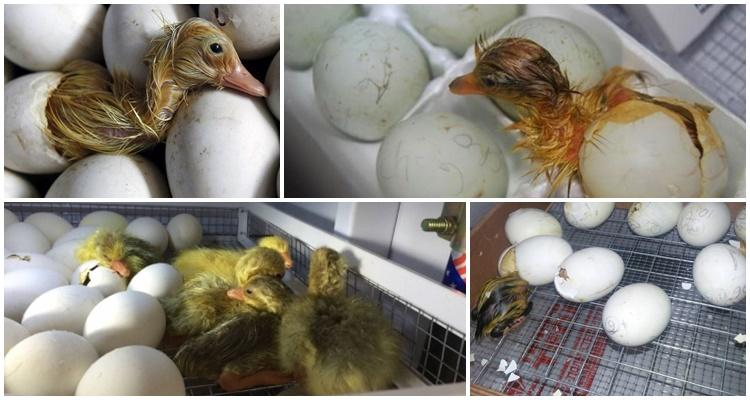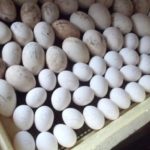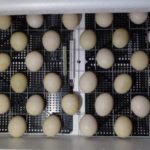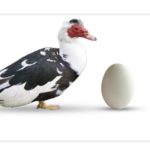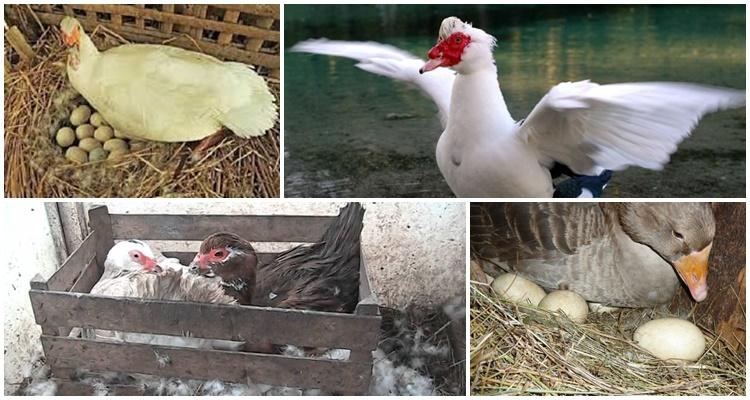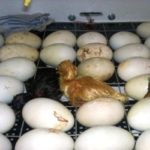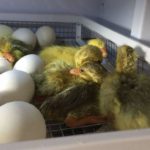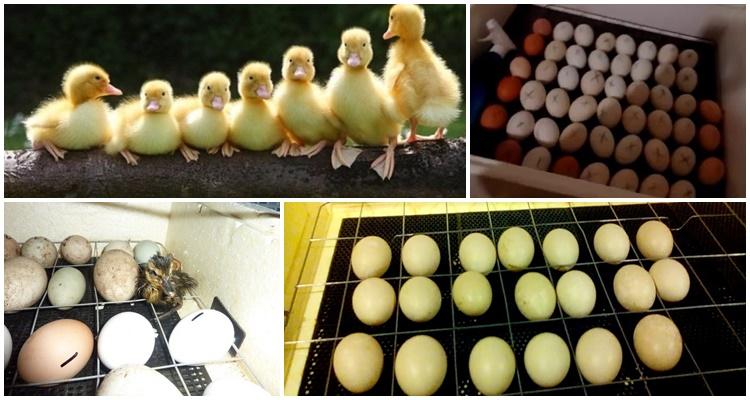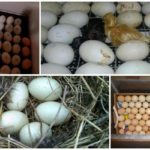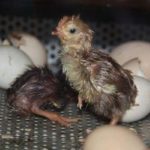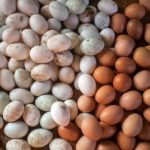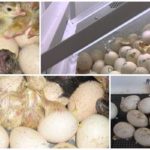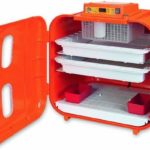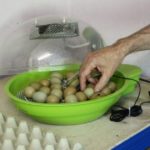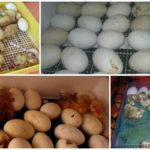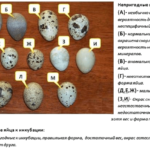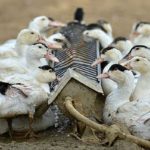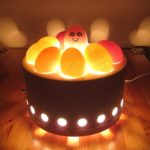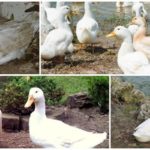To obtain a large number of full-fledged healthy offspring in households and poultry farms, it is necessary to use incubation of turkey eggs. With a small number of poultry, hens can also incubate, but this method cannot ensure stable hatching of chicks and obtaining a large number of them, especially since not all mute birds exhibit the brooding instinct.
Selection of suitable equipment
To breed Muscovy ducklings in an incubator, models are selected based on basic characteristics.For growing in a homestead, the device can be the simplest, the main thing is that it maintains a constant temperature regime suitable for indo-duck eggs. For this purpose, the incubator must be equipped with a thermostat and a special container of water that provides the required level of humidity.
In simple incubators, eggs must be turned manually. They also use natural ventilation necessary for the exchange of gases in the container. Often the simplest incubators are boxes with holes in the walls, with a tray of water and an incandescent lamp inside. They hold about a dozen duck eggs, and it is extremely difficult to maintain the correct regime.
More complex devices provide electronic control of humidity and temperature, as well as devices for automated turning of masonry, forced ventilation, which eliminates overheating and removes excess carbon dioxide.
One of the popular options is the Blitz series of incubators. They are available in a dozen variations, ensure the hatching of up to 98% of laid eggs, and are supplied with detailed instructions. The manufacturer has been working in this market for 23 years, manufacturing, servicing and repairing incubators, and provides a guarantee of up to 3 years for a number of models.
Selection of eggs and their storage
The success of incubation depends on how well the eggs are selected for incubation. To do this, the following conditions must be met:
- Wash your hands thoroughly before collecting eggs for the incubator. Do not use scented detergents.
- Collect eggs laid from morning until 6 pm.
- Take the eggs with two fingers, grasping the opposite parts so as not to damage the film covering them.
- Eggs for incubation should not be stored for more than 8 days.With longer storage, the hatching success rate will steadily decline.
- Choose eggs weighing 70-80 grams, oval in shape, with an even, smooth shell without stains or damage.
- They must be fertilized. The drake should be with the ducks a month before the planned incubation of the ducks.
- Before placing them in the incubator, check the masonry using an ovoscope. The yolk should be in the middle, the air chamber should be formed.
- Place the eggs horizontally in the incubator, large ones 3-5 hours earlier than smaller ones.
- Do not wash the eggs, but choose clean ones. To avoid contamination, you need to change the litter in the nest more often.
When using an incubator at home, you need to select eggs from the best producers, this will help you get strong and healthy offspring.
Stages of incubation of indo-duck eggs
The duration of incubation for indo-ducks is 32 days. The entire incubation period is divided into 4 stages. Each of them is characterized by its own temperature and humidity conditions, which must be observed. Ventilation is also of great importance, especially during the hatching of indo-duck chicks, when the air temperature rises due to their body heat.
| Stage | Deadlines | Temperature,
degrees Celcius |
Humidity level, % | Turnover frequency | Ventilation |
| First | From 1 to 16 days | 38 | 60 | 4 times a day | Once a day, 5 minutes |
| Second | From 17 to 27 days | 37,5 | 52 | 4 times a day | Twice a day for 20 minutes |
| Third | From 28 to 29 days | 37,3 | 70 | — | Once a day for 10 minutes |
| Fourth | From 30 to 31 days | 37 | 70 | — | — |
In order to avoid problems when incubating duck eggs, it is better to use a special schedule, which details all the details day by day for beginners.This approach will provide the most comfortable conditions for future indo-duck chicks and will help hatch the largest number of them in one incubation.
Control of embryo development
To get a healthy brood, it is not enough to just use the instructions. Each stage of incubation must be controlled. An ovoscope is used for these purposes:
- After the first 7 days of the process, the blood vessels of the embryo become visible. The inside surface turns pink, and shadows of the developing embryo are visible when moving. If no signs of life are detected, the turkey egg should be removed.
- At the end of the second week, a formed duck embryo should be visible. If there are no signs of life, the egg is removed.
- The last candling is carried out 48 hours before hatching. In this case, only the air chamber should be visible.
When the ducklings hatch, their down is still wet. They can be removed from the incubator only after drying.
Ducklings hatching
The process of incubating turkey ducks is almost no different from breeding geese. On the 30th day, the first chicks begin to peck. At this time, you need to increase the humidity - it helps make the shell looser, which will help the duckling to get out.
On the 32nd day, almost all the chicks hatch, and the process is finally completed on the 34th or 35th day. At first, after incubation, the ducklings are still wet and lie in the shell or next to it, so the air temperature is gradually reduced from 35 to 28 degrees.
Feeding of the baby duck chicks begins immediately after drying.In nature, ducklings begin to eat very quickly, since the supply of nutrients from the egg has already been exhausted. The first meal usually consists of boiled chopped yolk, greens and boiled millet.
Possible mistakes
Breeding poultry using an incubator gives a greater yield of healthy, healthy chicks than hatching them under a hen. If the farm has about a dozen indo-ducks, purchasing an incubator is unprofitable. If there are a lot of birds, then this will be a practical solution.
However, you will need to strictly follow the device manufacturer's recommendations and incubation rules. Helpful advice from experienced specialists will also come in handy.
The most common mistakes made by beginners in using an incubator for incubators are:
- Temperature violations.
- Changes in humidity, dry air during hatching of chicks.
- Lack of ventilation or insufficient air supply.
- Irregular turning of eggs.
- Mixed laying of eggs from turkey ducks and other birds into the incubator.
- Use for incubating dirty eggs.
- Violation of hygiene rules.
- Wrong choice of eggs.
For breeding indo-ducks, comprehensive compliance with technology requirements, as well as the use of exceptional material for incubation, is important. Even a violation of a single point can cause a decrease in the yield of chicks. A careful and careful approach is a condition for obtaining up to 95-98% of hatched ducklings. Then the number of Indian ducks will steadily increase, bringing profit to the owners.

